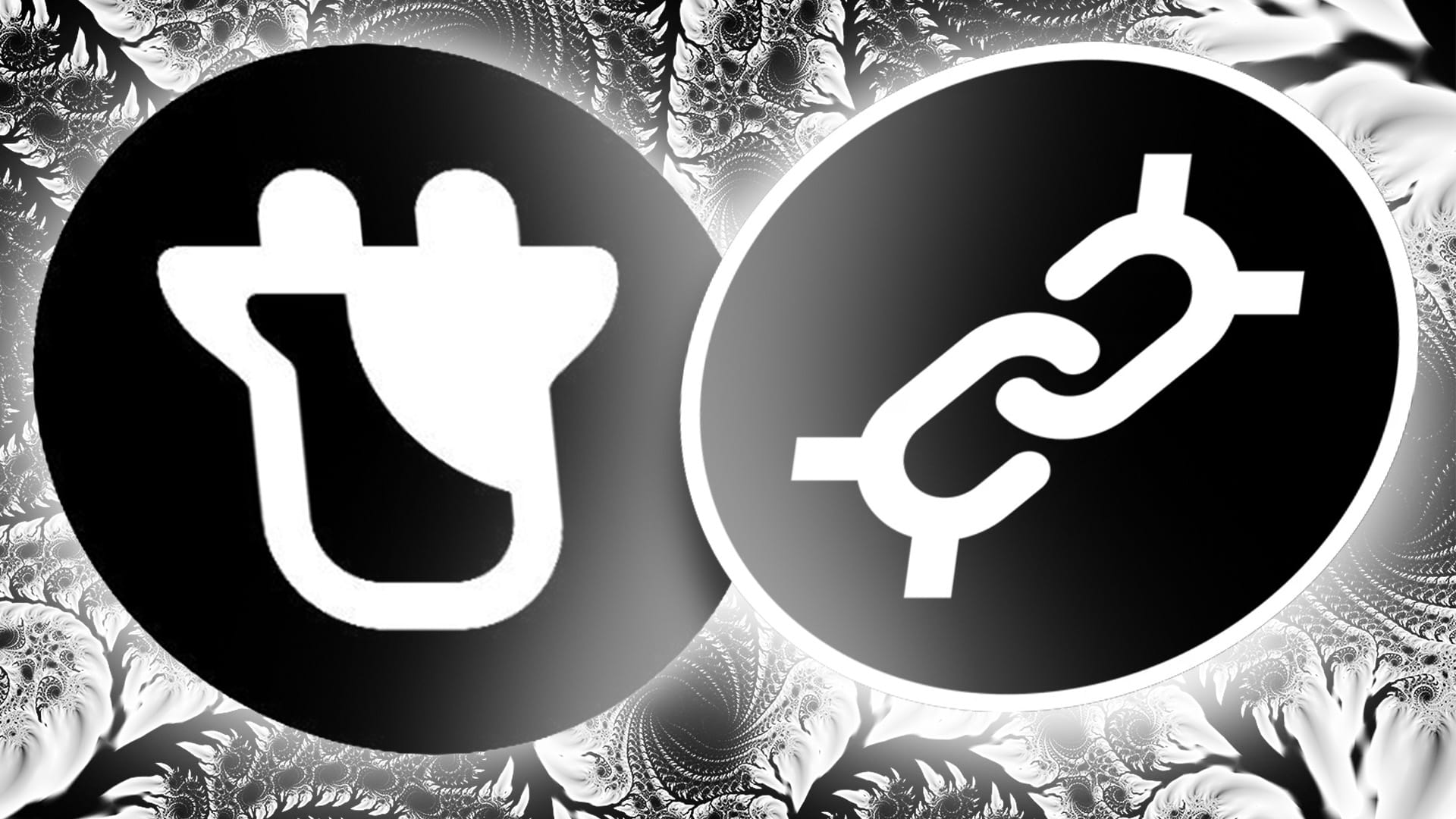Introduction
In 1971, the US Dollar moved off the gold standard. Up until that point, each marginal dollar minted had to be backed by an equivalent amount in gold, which became increasingly unwieldy as the size of the economy had grown. This transition represented a shift from a ‘hard backing’ to a ‘soft backing’, where global demand for the dollar as a liquid asset helps it sustain its value against other currencies.
This worth is derived from the fact that the dollar is backed by the full faith and credit of the American government. Practically, this means that USD is backed partially on ‘faith’, and partially by government revenue. This cashflow is what causes the dollar to gain and lose value, relative to other currencies, as trade and domestic industry cause demand volatility.
Enter Stablecoins
In the digital asset space, there has been explosive growth in the use of stablecoins. These tokens are pegged to $1 USD, and facilitate liquidity and the translation of fiat into DeFi and the wider web3 ecosystem. However, because they are not issued by a government or Central Bank, they cannot rely on any external or pre-existing “faith or credit.” Instead, stablecoins have historically had to be fully collateralized, if not overcollateralized, ensuring that users can know with certainty their stablecoin is backed by real value. This allows institutions to issue stablecoins, generate revenue, and optimize their balance sheet, while still providing users assurance that they can redeem their stablecoins for assets with hard value in the event of a bank run.
As an example, USDC is fully collateralized through cash, and cash equivalents. For every USDC minted, there is $1 of collateral in the treasury and USDC users can redeem 1 USDC for $1 at any time for any reason. On the other hand, DAI is overcollateralized via on-chain assets, such as ETH. Due to the fact that the assets backing DAI are volatile, they require a treasury in excess of backing to ensure redemption functionality in all market conditions. While this creates trust and user confidence, it hampers liquidity and capital efficiency.
Attempts to create ‘algorithmic’ or ‘automated’ stablecoins have recently materialized, and although many have failed, there have been a few that have continued to show remarkable resiliency, the oldest and most notable of which is FRAX. The goal of this series of papers is to name the necessary conditions for a viable undercollateralized stablecoin to exist, examine the faults of previous iterations, and determine whether FRAX fulfills the criteria for success.
Necessary Conditions:
Partial-Collateralization
For a partially-collateralized stablecoin to succeed, it must remain functionally over-collateralized through a combination of backing, trust, and revenue generation. Trust is earned, not created; at this point, given historical precedent and the nascent stage of the industry, assume value in trust to be approximately zero. Therefore, through a combination of trusted assets and revenue streams, a partially-collateralized stablecoin could be both undercollateralized and pegged to $1.
Theoretically, this could be accomplished in the future by an existing fully-collateralized stablecoin/institution such as USDC/Circle. Today, USDC is backed 1:1 by the USD dollar, Circle does not have to rely on revenue or trust to back USDC. However, this could (theoretically) be changed. In 2023, Circle is forecasting a profit of $820mn in 2023. They could pass through this revenue internally, signaling that the USDC reserve would grow today and in the future. If enough people have trust that this will continue, they might be willing to mint more USDC than there is backing because they know that in the future it will be backed by revenue. Thus, by leveraging its revenue and creating trust, USDC could shift to an undercollateralized model.
Collateralization ratio (CR - the ratio of outstanding stablecoins vs backing assets) flexibility is important. Without it, the system will be over-capitalising in periods of high revenue generation, and (more concerningly) under-capitalizing new issuance if revenue falls and CR remains untouched. Therefore, the first necessary condition for partially-collateralized stablecoin success is a collateralization ratio that flexes as protocol success and community trust ebbs-and-flows.
For a partially-collateralized stablecoin to work in all situations, it needs to be prepared for black swan events where investor confidence is nonexistent. In that reality, the minimum necessary collateralization ratio for a token should be-
Collateralization Ratio (Stablecoin) = 1 - Protocol Profit Ratio
Assets Deposited = CR*(Backing Asset) + 1-CR*(Seigniorage Token)
Where CR floats as protocol profit creates surplus value on the balance sheet, relative to total liabilities in the form of issued stablecoins. So, if the stablecoin was running a net profit on its balance sheet of 6%, they would be able to offer a CR of 94%. The backing token would be some other asset - likely a fully cash collateralized stablecoin (USDC), or, ideally, a CBDC.
Sustainability
The second necessary condition is to maintain a source of protocol revenue generation that is:
- Sourced from organic demand
- Diversified
- Agnostic to the markets and protocols they are used in
In order for revenue demand to be considered “organic,” the revenue must be sourced through genuine user desire, rather than artificial or subsidized interest in the product. Revenue should not be correlated (or at least dependent) on marketing spends such as bonus yield. This sounds intuitive, but a number of automated stablecoins encourage use through ‘mercenary liquidity’ and unsustainable incentives, which increase burn rather than stabilize it.
The second point is diversification of revenue. Crypto and DeFi are still very young and volatile industries. In order for a stablecoin to remain stable, it must be confident that it can continue market operations in ALL market conditions. As a result, the diversification of revenue streams and collateral backing are critical to long term success. Historically, a failure to diversify has led to the collapse of many partially-backed stablecoins when a 3rd party dependency undergoes stress or otherwise cuts cash flows. The instability inherent in under-collateralization must be shored up by diversification of use (and therefore revenue).
Agnostic revenue means that the protocol should refuse to take on a fundamental view on markets or token price. All too often, the source of a stablecoin’s unwind occurs at the hands of an inherently misplaced price assumption. A protocol assuming a guarantee of its own stability as a necessary condition for functioning almost guarantees its failure. Therefore, ensuring that internal banking operations are price agnostic and designed to work efficiently under stress is crucial.
So, the necessary conditions for automated stablecoin success are:
- Flexible Collateralization Ratio, that adjusts as protocol revenue and market sentiment shifts
- Revenue, driven by price-agnostic banking operations
Historical Precedent:
There have been a number of unsuccessful historical attempts to create automated stablecoins. Using the most notable examples, let’s investigate a selection of case studies, to verify our basic framework. For each, we will address the token mechanism through which peg was maintained, the macro outlook around collapse, and how the combination effectively guaranteed defeat in advance.
UST
UST was an algorithmic stablecoin that was inherently integrated into the LUNA chain at a protocol level. While its rapid growth was truly impressive, it set the stage for one of the quickest and most violent collapses in crypto history. In May 2022, UST, LUNA and the LunaTerra ecosystem crashed, destroying billions of dollars of investor wealth.
LUNA’s primary peg-keeping mechanism was based around redemptions of UST for LUNA, and vice-versa; when new UST is minted, an equivalent dollar value in LUNA is burned. At any point in time, if UST was trading below peg, users could simply purchase the stablecoin and exchange it for $1 worth of LUNA. So, while UST was not technically collateralized, it was effectively backed by investor confidence in LUNA and its future revenue potential In 2022 it appears that TerraLuna began to recognize the issue and began to acquire BTC to act as reserve backing for UST. However, in retrospect it was too little too late. At the time of collapse TerraLuna had acquired ~$3bn in Bitcoin to back 20bn UST .
In upward markets, this mechanism was successful. UST minting was facilitated by the 20% ‘savings’ rate (non organic/subsidized) offered by Anchor Protocol. This incentivized users to select UST over other stablecoin offerings, and drove upward pressure on LUNA price, improving the ‘backing’ of the operation. This cyclical effect, and a positive macro environment, made LUNA the third best performing token in 2021.
In April and May of 2022, something changed. A lot of good work has been done detailing the exact straw that broke the camel’s back, so we will instead focus on the fundamental issues of UST (within our framework) that guaranteed its demise:
- Lack of a flexible collateralization ratio, leading to Asset-Liability mismatch. An unbacked, fully-algorithmic stablecoin remains the equivalent of the alchemist’s quest to turn lead into gold. Due to natural market factors, as well as subsidization of Anchor yield, Terra had an asset-liability mismatch. Do Kwon attempted to increase confidence through purchasing Bitcoin, but the amount ($3bn) was fairly insignificant relative to total UST issuance ($18.5bn).
- Mechanisms were not agnostic. UST was always redeemable for $1 of LUNA through Terraswap, regardless of the economics of the trade. The protocol was designed to work with peak efficiency in markets where LUNA’s price was either up or flat. As the peg of UST continued to fall, the team was taking increasingly large losses on each redemption, further accelerating the decrease in value and inflation of LUNA. This, in turn, aggravated the existing asset-liability mismatch. Additionally, given that LUNA was the primary method of entering and exiting UST, it created a tremendous amount of systemic risk through a single vector.
- Demand was not fundamental or organic. At peak, ~70% of circulating UST was locked in Anchor Protocol, farming 20% APR on UST deposits. Such a high yield was unsustainable, leading to Terraform Labs needing to top off the pool with as much as $450mn. Few on-chain (or off-chain) transactions were using UST as a pair, causing some to question UST’s use case outside of saving in Anchor Protocol. As UST’s balance sheet expanded, it began losing money at ever-faster rates, as its sole realized use case was Anchor Protocol, which operated at a loss.
In summary, the same mechanisms that made UST so attractive were its ultimate weak points. An effective collateral ratio of 0% meant it was very easy to mint new UST and grow the supply, but it also made it extremely easy to unwind. Both actions had a direct impact on the price of LUNA, and each action incentivized the next user to do the same action in the same direction. Thus, when times were good and inorganic incentives flowing, LUNA/UST skyrocketed and vice versa.
Iron Finance
Prior to UST, Iron Finance had an extremely popular algorithmic stablecoin, IRON, that accumulated ~$2bn in circulating supply. The stablecoin was supposed to remain pegged to $1 through a combination of locking 75% of each IRON’s value in collateralized USDC, and 25% into their native governance token, TITAN. Redemptions worked the opposite way, exchanging $1 of IRON for the equivalent value in USDC and TITAN. Like LUNA, this created a positive feedback loop during up-only markets, but collapses when sentiment on TITAN decreases.
Given that TITAN was unbacked, there was also no failsafe to prevent price from spiraling downward. So, also like LUNA, panic caused widespread redemption and selling of TITAN, which drove down price and aggravated existing under collateralization. Yet again, the protocol made an assumption of baseline fundamental value for an unbacked token, with any method of guarantee. So, what went wrong?:
- Lack of a flexible collateralization ratio. Yet again, we see issuance rigidity. Iron Finance was designed to work well in flat-to-up markets, but was fighting a losing battle to make dollars out of 75 cents, especially in environments where TITAN’s price was crashing.
- Non Agnostic Mechanisms. As markets submit, the required ratio of USDC should have increased relative to TITAN. This would have both reduced price pressure on TITAN during redemptions, and increased the collateralized backing of IRON to increase investor confidence.
Takeaways
Prior iterations in the space have truly been ‘algorithmic’ rather than ‘automated’ stablecoins. Rather than use digital flexibility to adjust required collateral, they make fixed assumptions about unbacked asset prices that are axiomatic for the system to function.
Mechanisms should remain agnostic about the success of the protocol, and as to which side of the trade they are taking. The primary goal in almost all cases should be to maximize profit generated through banking operations. Design of the protocol should be configurable such that, in the event of a bank run, collateralization ratio is able to go up to 100% backed by non-protocol assets.
FRAX Finance:
In future papers we will further develop the requirements for a partially collateralized stablecoin and seek to examine if FRAX meets them. These are not metrics sufficient to achieve success as a protocol or as a business, but instead are fundamental requirements for a functioning stablecoin.
To begin, let’s look broadly at how the project fares against our most general set of conditions:
- Partial-Collateralization, via a flexible collateralization ratio, that adjusts as protocol revenue shifts. While it’s not strictly dependent on protocol revenue, FRAX does have a flexible collateralization ratio. The CR makes no assumptions, and floats at whatever rate the market demands. In an environment where there is no demand for algorithmic stables, the CR would be 100%, and FRAX would become a fully collateralized stablecoin, redeemable for $1 of value at all times
- Sustainability, built on organic demand and price-agnostic revenue. FRAX earns revenue through AMOs, which are algorithmic monetary policy makers that help conduct open-market operations for the protocol (with only minting FRAX off-limits).
Conclusion
Already, FRAX performs significantly better against our litmus test than other assets. In future reports, we plan to dive into each aspect of FRAX’s differentiated structure. For now, it’s worth leaving you with an important set of questions to consider. Previous algorithmic stablecoins have been binary attempts to remain pegged; they require large, inflexible trust assumptions in order to remain genuinely undercollateralized. When those bonds break, the entire system collapses on itself.
If a stablecoin, instead, used flexible trust assumptions to remain functionally fully collateralized at all times, would it be more resilient in times of stress? How would it function, and just how could you break it?




